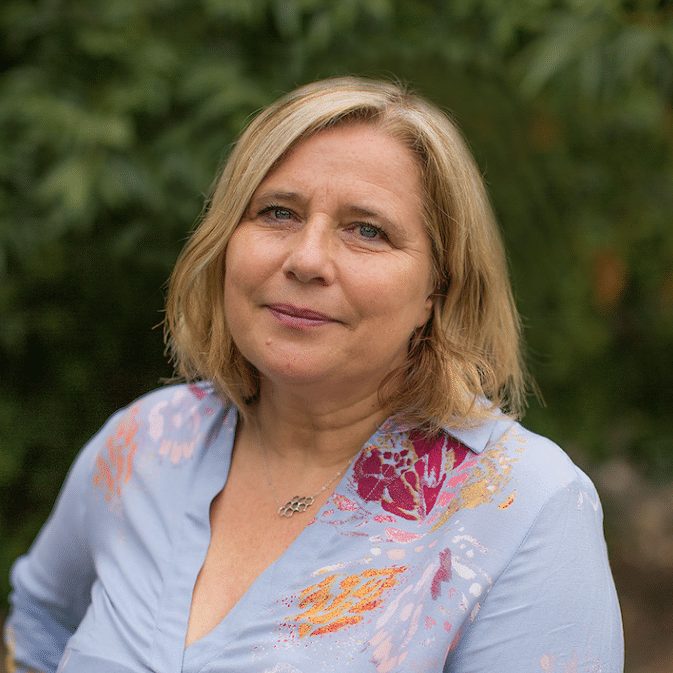October 1, 2018
The MERIT program continued to shine this July as 44 educators started the 2018 program, a 10-month journey to transform their teaching. They represent districts from across the Bay Area and California. While the two-week Summer Institute is rigorous and demanding, it is only the start of the journey as participants will attend four follow-up sessions through March 2019, take additional KCI classes, and earn 100 or more MERIT PD Points for educational technology professional development above and beyond enrollment in KCI classes.
To illustrate the power of MERIT, it is worth looking back at program graduates who have transformed the teaching and learning environments for their students. Halina Gallagher is one such teacher, and we are pleased to share her retrospective:
“Two years ago, I showed up for the MERIT orientation in hopes of strengthening my knowledge of progressive education. Little did I know, MERIT would completely change my perspective on effective instruction and set my own teaching career on an exciting new trajectory. Having only basic knowledge of technology, I had a lot to learn. Through exposure to new technology and the skills needed to navigate each technological platform, I was forced to think and work outside of my comfort zone. I grew not only as an educator, but also as a lifelong learner.
Nothing exists in a vacuum. MERIT equipped me with the tools to guide my students in making connections between the work we do in the classroom and what is happening globally. Through our Watershed Investigations project, we were able to participate in our first creek clean-up. By merely connecting the trash we found to our behavior, analyzing each piece, and sharing that data globally with Litterati, our class was ready to engage more deeply through a design thinking challenge. This allowed students to further investigate the impact of plastics in water pollution. The students embraced the challenge of passionate and playful exploration, using their creativity to iterate solutions to the problem. Excited to share this process with others, I applied for and received a KCI Microsoft Innovation Award. This experience gave me confidence to restructure my whole STEAM curriculum to better focus on environmental stewardship, global citizenship, and the concept of being called to action.
Now service learning through the creek clean up is a regular part of my curriculum. Twice a year my students and I clean Ross Creek. In the spring we invite the 4th grade to join us so they can be introduced to the tradition of stewardship. Our spring creek clean-up with the 4th grade shows my current 5th grade students the impact of our action. In spring, there was so much less trash and more signs of animals returning to the creek, such as beaver and salmon, compared to the fall clean-up.
This year, we decided to create art out of trash as our call-to-action. We cleaned and sorted the trash for possible artistic creation and utilized the design thinking process to prototype the art pieces. As a class, we decided to create two art pieces: a turtle and a fish. We used iPads to document each group’s iteration and made a collective design decision for the final draft, with all students contributing through discussion.
We were able to showcase our art at the Sixth International Marine Debris Conference. Organized by NOAA and the United Nations Environment Programme, the conference was held in San Diego where over 700 participants from 70 countries attended. The goal of the event was to take a deep dive to address plastic pollution.
While at the conference, I met many scientists and activists from Norway, France, Malaysia and other countries who are leading on the marine debris issue. I also had a chance to speak personally with NOAA representatives, Van E. Reidhead from the U.S. Department of State–Office of Oceanic and Polar Affairs, and Jack Johnson, whose Johnson Ohana Foundation sponsored the art exhibit. This opportunity energized and further engaged my students with a call-to-action. My students wrote letters on behalf of sea animals to governor Jerry Brown, and Panda and McDonald’s Corporations, bringing awareness of the danger to sea creatures caused by plastic bags and straws.
Through MERIT, I became comfortable with letting go of teacher-led instruction and moved more toward student-centered learning. This has truly impacted each of my students; they understand because they have experienced the call-to-action, and now grasp that through multi-disciplinary work, with the guidance of a passionate educator, individuals working together can and will make a difference in protecting a sustainable planet. Project-based learning, service learning and design thinking are all integral components of my educational repertoire. Through these important forms of instruction, my goals for my teaching practice and content have changed as well. Using math, science, language arts, and art, paired with technology became the vehicle by which I could instill compassion and empathy in my students who are the global problem solvers of the next generation.”
Questions? Please contact programs@krauseinnovationcenter.org.

